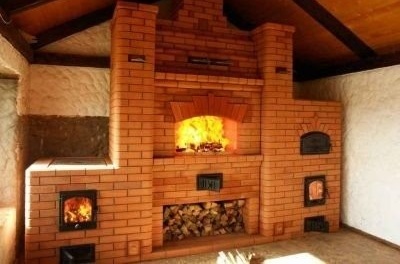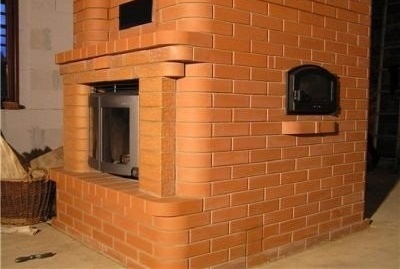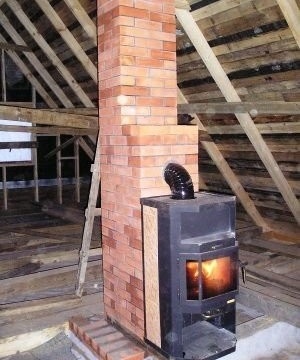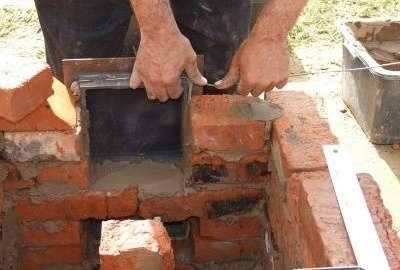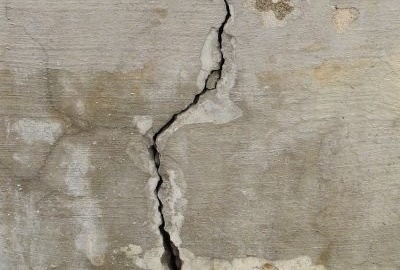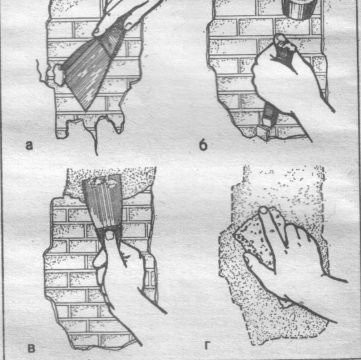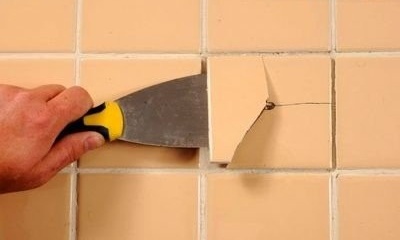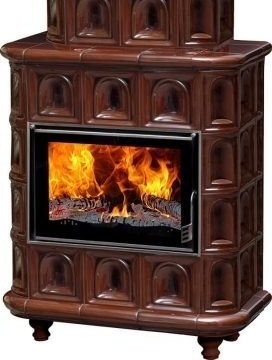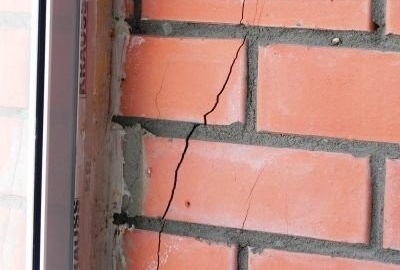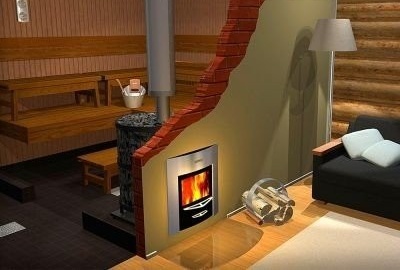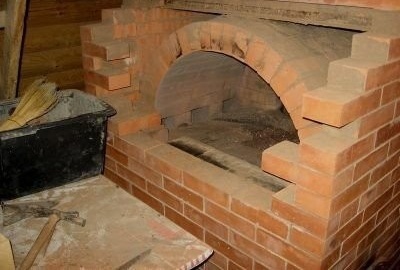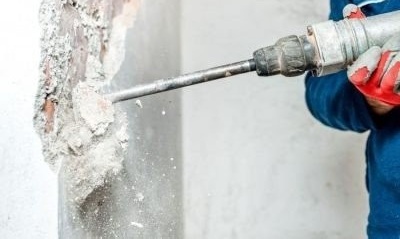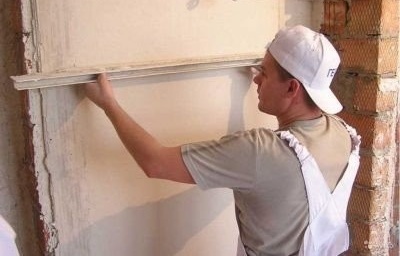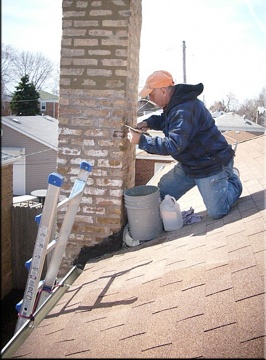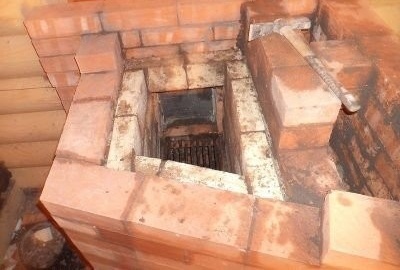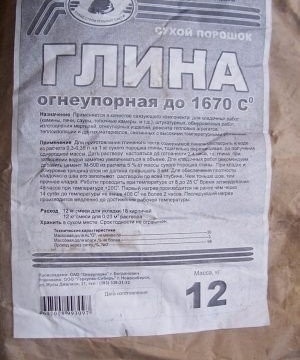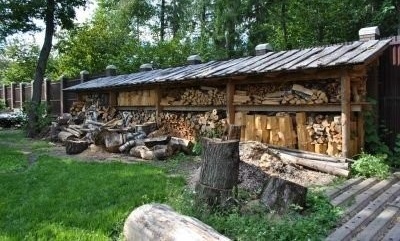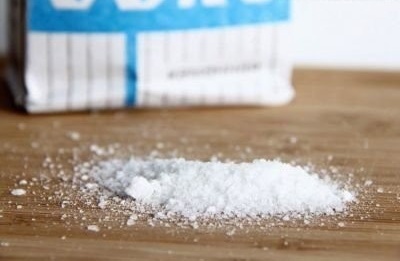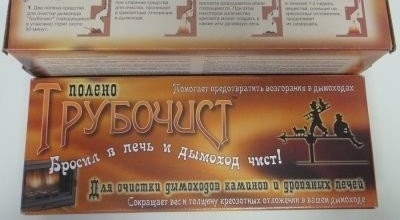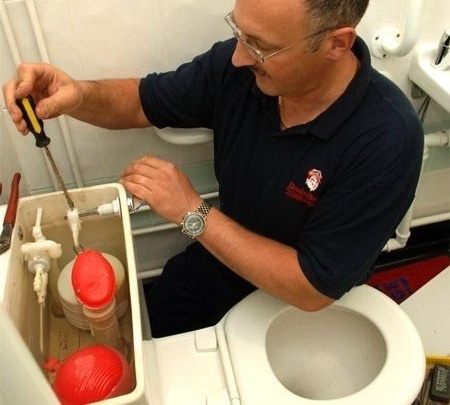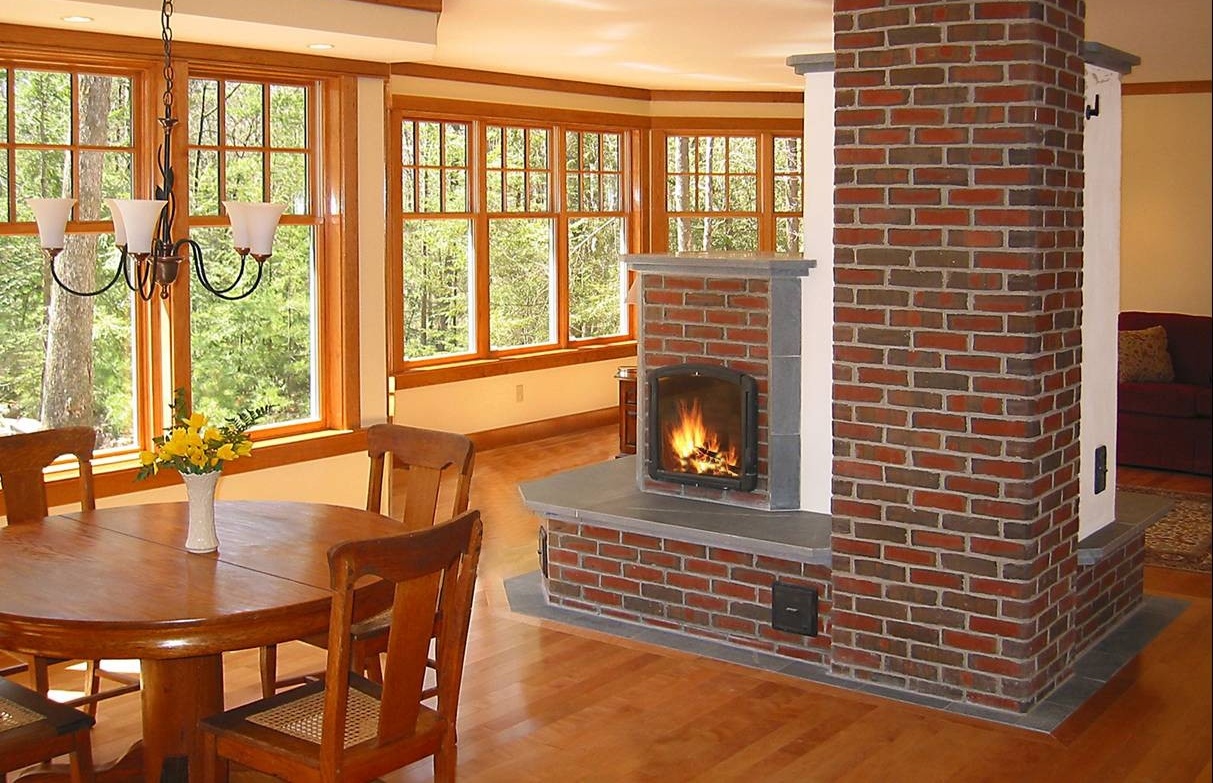DIY oven repair
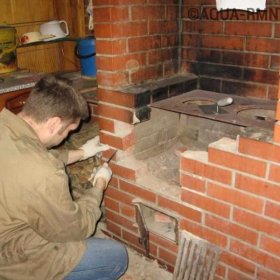
A stove is a universal device that in one form or another is in every home. It not only heats the living room in the cold season, but also is a place of cooking, a source of hot water for domestic needs. Failure in the operation of the furnace threatens the comfort of living conditions, so the importance of its repair and timely maintenance cannot be overestimated. A remarkable property of the Russian stove is that its device is quite simple and every person who does not even have special skills and knowledge can restore normal operation.
Content
Features of the furnace repair: when it is needed
To approach the repair of a furnace with knowledge of the matter, you need to familiarize yourself with its device.
There are a great many varieties of the design of furnaces, but in each of them there are three main components: a furnace, a heat exchanger and a pipe. All other devices and devices are designed to ensure the smooth operation of these three components. They should be paid special attention to when diagnosing the operating condition of the furnace.
- A firebox is a combustion chamber in which a process of fuel burnout occurs. To maintain fire, air must flow freely to the firebox. Combustion by-products (smoke and carbon monoxide) are discharged through a heat exchanger into the pipe.
- The heat exchanger is used to convert the thermal energy of the fire into heated air. It can be a coil filled with water or antifreeze, or just a wall of the furnace, in contact with which the air in the room heats up.
- The pipe is a structure for the removal of exhaust hot gases. Not only smoke, but also soot, which is not a completely burned carbon compound, escape through the pipe.
If everything works fine, there is no cause for concern. But sometimes failures may occur:
- smoke or the smell of smoke appears inside the living room;
- the surface of the furnace wall is covered with cracks;
- there is no draft and it is difficult to melt the furnace;
- the stove, although it burns, does not heat the house well.
So, it's time to pay attention to the repair and maintenance of the furnace.
The longevity and efficiency of the furnace depends on how it was folded, how it is operated and how care is carried out.
Let us consider in more detail the circumstances under which it is necessary to repair the furnace equipment.
Varieties and description of furnace repair methods
According to the level of scale, the repair of the furnace is conventionally divided into three categories: current repair, medium and major.
Small, current repair
This elimination of minor breakdowns, which can be performed immediately, without interruption in the operation of the furnace. This should be done as often as possible, as all major troubles begin with minor ones. But by themselves, they can lead either to a fire or to an accident.
Replacing the grate
Quite often, the need to replace grate arises with violations of the furnace mode. Creating too strong traction in the furnace leads to an inappropriate increase in temperature. Temperature may rise above 1000 aboutC, especially when the stove is heated by coal. If this effect on the grate is continuous, they can melt and change their geometric shape. Deformation or cracking leads to the fact that fuel and ash wake up in the lower compartment under the furnace - a podzol. This entails a reduction in air flow and inefficient use of combustible material.
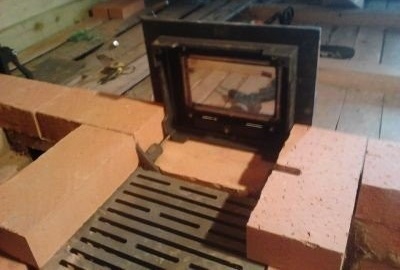
The installation of a grate and a furnace door is a crucial stage in the construction of the furnace
Replacing the grate is simple, and you should not put it in a long drawer. After the furnace has cooled down, it is cleaned of ash and ash, a cast-iron grate is taken out and a new one is installed in its place. There is no need to fix it - it is massive enough and lies under its own weight. Around the perimeter of the grill leave a gap of 5 mm. This gap is covered with sand or ash.
Replacing the oven door and ash pan door
Firebox and blower doors play an important role in regulating the combustion process. It was established experimentally that a loose-fitting fire door with a gap of only 2 mm reduces heat transfer by up to 25%. Therefore, the efficiency of the entire operation of the stove depends on its serviceability. The combustion chamber door must close the combustion chamber tightly; for this, it provides for an additional fixation of the closed position by means of a valve or latch. If the valve is out of order (the frame is deformed or the hinges on which the door is fixed are damaged), it is necessary to replace the door.
To do this, it is carefully removed from the masonry together with the frame. Brute force should not be used. The bricks to which the door is attached must remain unharmed. Door fastening can be of several types. The most common ones are:
- fastening with metal paws (clamps);
- installation of anchors;
- fixation with wire.
In old furnaces, most often you can find fastening with a wire, which was tied to the frame with one end, and the other was embedded in the masonry. This fixation is quite reliable, but over time, the wire burns out and the door falls out. In more modern furnaces, anchoring is used - there are special holes in the frame for the transverse installation of anchoring. But the most convenient (including when replacing) is considered to be the use of special “paws” that will securely fix the frame in the desired position. Before installing a new door, it is necessary to thoroughly clean the opening, remove crumbling brick chips from the sides. Installation is carried out on a cement or clay mortar of dense consistency.In the gap between the frame and the bricks, an asbestos gasket is pre-laid and the plane is leveled with a liquid solution.
Crack Sealing
It is very important to ensure that no cracks form on the walls of the furnace. Smoke can enter through the room, creating a threat to human health and life. Cracks can be of two types. The first - the least dangerous - when damage affected only the outer lining of the stove. It can be plaster, ceramic tile or tiles.
- Cracks in the plaster are fixed in the following way. Seams are cleaned to a depth of 15–25 mm, moistened abundantly with water or a construction primer, and rubbed (swab) with a homogeneous sand-cement mortar or clay. After drying, you may need another face layer of plaster.
- If a crack has formed on a tile or other facing material, first of all it is worth assessing its size. In the case of small cracks, they can be eliminated with ordinary gypsum putty, preferably of such a modification that withstands thermal expansion. If the tile burst along the entire length and fell off, it is better to replace it entirely. A recess of 20–25 mm is made at the attachment point and a new one is mounted using pre-prepared tile glue.
- Tiles are repaired with chalk or lime mortar mixed with egg white. The consistency of the repair mortar must be maintained so that it penetrates deep into the fault. After solidification, the excess putty is removed from the surface. The replacement of a single tile is fully applied if cracking is extensive. To do this, you need to choose a new tile that is suitable in shape, if necessary, grind it with a grinding bar or grinder. The damaged element is removed and carefully cleaned up its place. The ramp of the new tile is filled with a dense solution and installed in the right place. The gaps formed are filled with special grout. In the absence of such, gypsum mixed with potassium alum is allowed.
Often, under the cracks of the cladding, deeper destruction can be found - burst bricks, which, in fact, caused damage to the outer layer. This type of crack is more dangerous, because through it smoke and carbon monoxide will necessarily ooze into the living room, although this is not always noticeable. Faced with such a problem, you will have to temporarily suspend the operation of the furnace and repair the damaged area.
The repair procedure in this case will be as follows:
- It is necessary to remove the burst brick, clean the place where it was well.
- Choose a new brick in shape and size - it should easily fit in the formed opening, without protruding beyond the plane of the wall. Next, do everything in the usual manner, as when laying.
- Moisten a new brick, well moisten the place of its landing.
- On the mortar, install a new brick in the prepared place.
- After drying (if necessary) apply a layer of leveling plaster. Grouting must be done with a liquid solution, filling all the cavities formed during the repair. The correct result is an even plane of the wall without protruding corners of the brick.
Replacing the preheater sheet
Sheet steel, from which the pre-heating sheet is usually made, wears out over time. Torn holes or rust may appear in it. All this complicates cleaning and increases the risk of fire. Coals deposited from the stove can fall onto a wooden floor and cause a fire.To avoid this, it is necessary to timely replace the protective sheet with a new one.
The procedure in this case is as follows:
- With the help of a mount, the damaged metal is torn off the floor.
- In its place install a replacement. Under the pre-heating sheet, it is customary to put a felt pad soaked in liquid clay solution, or an asbestos plate 2-3 mm thick.
- A new sheet of iron is firmly fixed with nails or screws to the floor.
Medium Repair
Under average repair means the elimination of more serious defects in the operation of the furnace. They require the partial dismantling of individual units or special events related to the complete shutdown of the operation of the fuel unit.
Hearth repair
Stove is called the bottom surface of the furnace. Over time, it wears out, the clay mortar between the bricks fades, and under it can sag.
For repair it is necessary:
- Partially or completely (according to the situation) through the mouth to extract the brickwork.
- Before laying the new hearth, you need to level the sand cushion to the required level.
- Then, from the six to the back wall, lay out a new one under.
- Intervals between bricks to fill in with a liquid solution of clay or sand-cement mixture.
- If necessary, grind the plane, remove protruding hillocks, and fill the troughs with fine sand or sifted ash.
Repair of the furnace vault and chimney head
The combustion chamber can withstand the highest temperature during combustion. Not surprisingly, over time, bricks can begin to crack and crumble. Gradual eruption leads to the formation of deep cracks that can spread up to the outside of the wall. Repair consists in disassembling the roof and replacing the masonry with a new brick. It is necessary to strictly observe the geometry of the masonry and perform the correct dressings.
The tip of the chimney is affected by atmospheric phenomena on the one hand and the destructive effect of hot smoke on the other. This leads to the fact that the upper part of the brick pipe loses strength. The reactive condensate formed by mixing soot and water corrodes the fastening solution, and individual bricks begin to fall out, sometimes in the interior of the chimney. Therefore, it is periodically necessary to monitor the state of the masonry head. If defects are found, the pipe is disassembled, cleaned of an obsolete solution and repositioned. The upper part is laid out obliquely to drain the water.
A good addition to extend the life of the head is a sheet or roofing sheath made in the form of a pipe. When repairing the head, it is very important to observe the correct bandaging of the brickwork (at least 50% of the surface of the brick block).
Plastering the exterior walls of the furnace
If the number of chips and cracks on the surface of the furnace walls is widespread and there is no certainty that their formation will be stopped in the future, the plaster is completely changed. This is justified in cases where the cladding is physically outdated, has a nondescript appearance, and cracks grow dangerously.
The procedure for the work is as follows:
- The old plaster is completely removed. This is done quite quickly with a puncher, especially if the old finish is significantly dilapidated. Not only is the coating layer removed, but the joints between the bricks are cleared to a depth of 20 mm.
- After that, the entire surface is treated with a construction primer - this will allow the new plaster to firmly bond to the wall.
- A metal mesh is mounted on a dried wall, which will act as a reinforcement. The mesh is selected with a mesh size of up to 25 mm and is fixed on the plane of the wall with nails or screws. An anchor nail may also be used.
- In the corners, painting corners are installed and plastering is carried out. The use of a heat-resistant sand-cement mortar is considered optimal. But even an ordinary solution will completely cope with the loads, if table salt is added to it at the rate of 1 kg per 10 liters of solution. Naturally, subject to the correct temperature conditions for using the furnace (up to 90 aboutFrom the outside of the wall).
- After covering the entire plane of the furnace with a layer of plaster, it is heated to accelerate drying. If small cracks appear after this, they are overwritten with the grout and, after drying, they are painted or faced with ceramic tiles.
Chimney blockage repair
A sure sign of this problem is a sharp decrease in draft and heat transfer of the furnace. Blockages occur due to the use in the construction of substandard materials - bricks or mortar. In addition, an important role in the longevity of the masonry is played by the correct dressing of the joints and compliance with the unit's operating standards. Too large and frequent loads lead to the fact that the materials are destroyed prematurely.
The blockage is determined using a long metal cable, which is launched through the pipe and the cleaning holes. Sometimes the blockage can be eliminated by lowering the heavy weight into the chimney, the fragments of the broken brick are removed through the treatment door. But if the wreckage is in an inaccessible place (in the horizontal passages of the chimney), you have to disassemble the masonry of the wall.
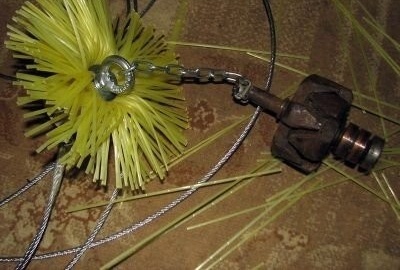
A cable for cleaning the chimney with a weight on the end is sometimes enough to eliminate the blockage
It is very good if at the same time an experienced stove-maker can determine the location of the moves and the destruction will be minimal. After eliminating the blockage, the furnace is restored: they collect part of the wall, plaster and paint.
Fire cutting
According to SNiP 11.17.78, which regulates the general rules for stone work, the places where the furnace equipment adjoins the building structures must be equipped with fire-fighting cut-outs. The rules for the production of work and repair of furnaces, in turn, provide an explanation:
- 3.2.1. In places where combustible and hardly combustible structures of buildings (walls, partitions, ceilings, beams, etc.) are adjacent to furnaces and smoke channels (chimneys), it is necessary to provide for cutting from non-combustible materials.
- 2.2. Distances from the inner surface (from smoke) of furnaces, channels and chimneys to a combustible or non-combustible building structure should be provided for not less than those indicated in table 1.
- 2.8. The distance from the ceiling of the furnace to the ceiling should be 350 mm to unprotected and 250 mm to protected.
- 2.9. The outer surfaces of brick chimneys when installing them through the roofs should be removed from combustible structures (beams, laths) to a distance of at least 130 mm.
Table: cutting sizes for furnaces and smoke channels
| Type of oven | When design is not protected from fire, mm | With a fireproof design, mm |
| Heating and heating-cooking with a periodic firebox lasting up to 3 hours | 380 | 250 |
| Heating and heating-cooking with a periodic firebox lasting more than 3 hours | 510 | 380 |
| Cutting when passing through the attic (floor) floor | 380 | 250 |
| The distance from the ceiling of the furnace to the ceiling | 350 | 250 |
As a rule, butchering is subject to destruction over time - shrinkage of the building and furnace, impacts, concussions affects.To restore them, not only bricks are used, but also concrete block structures, metal and other non-combustible materials. Cutting can be a metal mesh stretched over the frame, on top of which plaster is applied (with a thickness of 30 mm or more). The advantage of this option is the speed of installation, low cost and smooth surface.
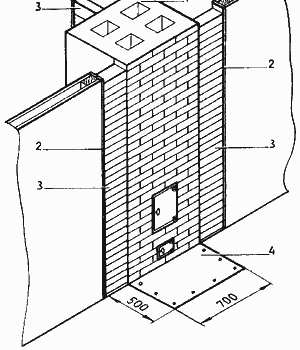
Vertical fire cutting furnace:
1 - heating stove; 2 - felt or asbestos; 3 - brickwork; 4 - metal sheet
Particular attention should be paid to cutting in the attic, insulated with sawdust or other combustible materials. It is recommended to periodically cover them with whitewash, on which all defects are clearly visible, especially traces of soot. When repairing cutting, it is necessary to lay all places of contact with wooden structures with felt in two layers or asbestos. To reduce the flammability of the felt, it is impregnated with a clay solution. The smell of smoldering felt eats and signals danger.
Video: inspection of the furnace and identification of necessary repairs
Overhaul
If the restoration of the furnace requires more than 25% of the dismantling of the brickwork, such repair is considered capital. During such repairs, the furnace is not in operation.
Pipe Damage Repair
The chimney is one of the key components of the furnace design. Failure of the pipe entails a violation of the draft and leads to the release of smoke into the living quarters. If the problem cannot be resolved with an average repair, the pipe is completely replaced.
For this:
- First of all, the front wall of the furnace is disassembled to the level of the hearth.
- The doors of the combustion chamber and the ash pan are removed.
- After cleaning, proceed to disassemble the chimney masonry. At the same time, protruding bricks for the ligament are preserved, having cleaned them of the old binder solution. The dimensions of the newly folded pipe remain the same.
- Start laying from the hearth.
- The doors of the blower and the combustion chamber are installed in their places.
- Next, lay out the rest of the chimney body.
- In the upper part, a chimney valve or view is mounted.
- Choose the best place for the cleaning door in such a way that the soot can be easily disposed of from the pipe during maintenance work.
- Masonry is performed in compliance with dressing sutures. In the process of pipe erection, the internal surface is squashed simultaneously.
- The upper tip is equipped with a protective umbrella.
- The reconstruction of the furnace is completed by restoring the front wall. The surface is plastered and rubbed. In the future, it can be painted or apply any other type of cladding. It is recommended to use tiles or other similar finishing materials (porcelain stoneware, majolica, terracotta, clinker, etc.) for cladding, after some time, after the structure has completely dried and shrunk.
After the chimney repair, the first furnace is recommended to be carried out with a small amount of fuel.
Repair of the fuel chamber and lining
Repair of the furnace, as a rule, is combined with the repair of the chimney. After disassembling the front wall of the furnace, full access to the combustion chamber opens. To restore the refractory layer, it is dismantled, the condition of the lining bricks is evaluated, and if necessary, replaced with new ones. If the chimney does not change, then it is necessary to disassemble the furnace wall from the level of the blower to the height of the furnace.
The best material for the furnace is fireclay brick, planted on a refractory mortar with the addition of fireclay chips. The space of the fuel chamber is thoroughly cleaned of debris and ash. New masonry is conducted without reference to the main brick massif, building a stable independent design of the furnace department. In order to avoid reducing the volume of the furnace, the thickness of the lining is maintained in the previous dimensions.In small and domestic stoves, fireclay bricks are placed on the edge, in large stoves - flat. The gap between them should not exceed 3 mm.
Video: analysis of typical mistakes when laying a brick oven
How to disassemble the stove without touching the chimney
Sometimes there are situations in which there is a need to disassemble the stove (or part of it) without affecting the chimney. For example, if the house has several stoves with a common pipe. The solution to this problem is best entrusted to an experienced stove maker. But if there is none, then technically the operation is carried out by mounting the supporting structure.
- At the chimney cut-off, a recess along the masonry seam is gated.
- A metal corner with a shelf No. 6.3 / 4.0 or more is placed in it (depending on the mass of the pipe, its size may be different). Corners are welded together around the perimeter of the pipe.
- After that, durable supports from the corners are installed from the bottom of the frame, capable of supporting the weight of the chimney. In this case, backlash or other gaps are not allowed, as they can lead to subsidence and deformation of the pipe masonry.
- Next, the furnace is disassembled in the usual manner.
- If a new furnace is installed in place of the old one, then after assembling the latter, the support columns are removed and the frame is removed from the corners.
- After the new furnace is connected to the old chimney, a test furnace is carried out, as a result of which cracks can be detected. Their elimination is carried out by grouting with clay or cement mortar.
Why the stove does not heat well
There may be many reasons, but the most common are:
- defects in the design or masonry of the furnace;
- low quality of fuel (raw firewood, for example);
- improper operation of the furnace.
In the first case, it is necessary to conduct a thorough audit of the entire unit with a view to detecting chimney blockages, cracks in the plaster of the walls, bursting bricks. If detected, eliminate.
In the second - check the quality of firewood or coal. Firewood should be dry and coal should be low in impurities. Of great importance is the method and location of fuel storage. Any fuel stored in the open air will have increased humidity, which adversely affects the combustion process. The fuel depot must be under a canopy, protected from rain or snow from above and at least from two sides. After sawing and chopping wood, they reach the required dryness (20–25%) not less than a year after storage, therefore they must be harvested in advance. Coal, peat, wood-particle briquettes and other types of fuel are also stored under a canopy, protecting from atmospheric precipitation.
First of all, improper operation can be attributed to the lack of preventive maintenance of the furnace. If you do not clean the chimney of soot, this leads to the fact that the draft in the combustion chamber decreases sharply and the combustion process becomes slow and ineffective. If this is not the reason, perhaps you should familiarize yourself with the basic rules of furnace furnaces. Here are some of them:
- When lighting, the blower is completely closed and the door of the combustion chamber opens. After laying the combustible material, the furnace door closes tightly, and the ash pan door opens by 50%.
- As the fuel burns, the intensity of the fire is regulated not only by the blower door, but also by the chimney damper or view.
- The best heat dissipation is a straw-colored fire. Too bright a white flame has a high temperature, but all the heat goes into the pipe, not having time to warm the walls of the furnace.
- The optimal duration of the furnace is 1.5–2 hours when using firewood and 5–6 hours when using coal.
- To clean the chimney from unburned soot before the completion of the furnace it is recommended for 15-20 minutes. open the blower door as much as possible - this will increase traction.
- For the best heat preservation, at the end of the furnace, the chimney gate and view are completely closed. But this is done only when only burnt coals remain in the furnace.
- To avoid carbon monoxide poisoning, the stove is heated 3-4 hours before bedtime. Some craftsmen drill holes in the viewer with a diameter of 0.5 cm in order to maintain minimal traction in the pipe. It is believed that such a measure guarantees the release of residual gases and does not reduce the temperature of the furnace.
Soot cleaning
Preventive maintenance of the furnace is the main condition for its reliable operation. It consists not only in timely repair, but also in the regular cleaning of the furnace and chimney from ash and soot.
At least once a year, before the start of the heating season, it is necessary to inspect the pipe.
If the soot layer in it exceeds 3 mm, the pipe is cleaned with special brushes that are lowered from top to bottom through the upper hole. In addition, there are simpler methods, with regular use of which you can achieve the same results. It:
- Burning salt or soda. At the peak of burning coal or firewood, 0.5 kg of salt is thrown into the furnace. In this case, the door must be closed tightly immediately. The gases emitted destroy the soot accumulated on the walls of the pipe.
- Firewood with dry aspen wood. When burning, aspen emits much more heat than other types of firewood. It is practiced as a fire chamber only with aspen wood, and its addition to the daily fire chamber in the amount of up to 30% of the total mass.
- Burning in a furnace of a clearing log two to three times per season. "Log chimney sweep" is a well-proven tool.
Video: soot cleaning the chimney
In each case, you need to approach the repair of the furnace individually. You should carefully study the condition of the furnace as a whole, if possible consult with the masters in matters of its restructuring. When performing work, you must be careful and use personal protective equipment.
